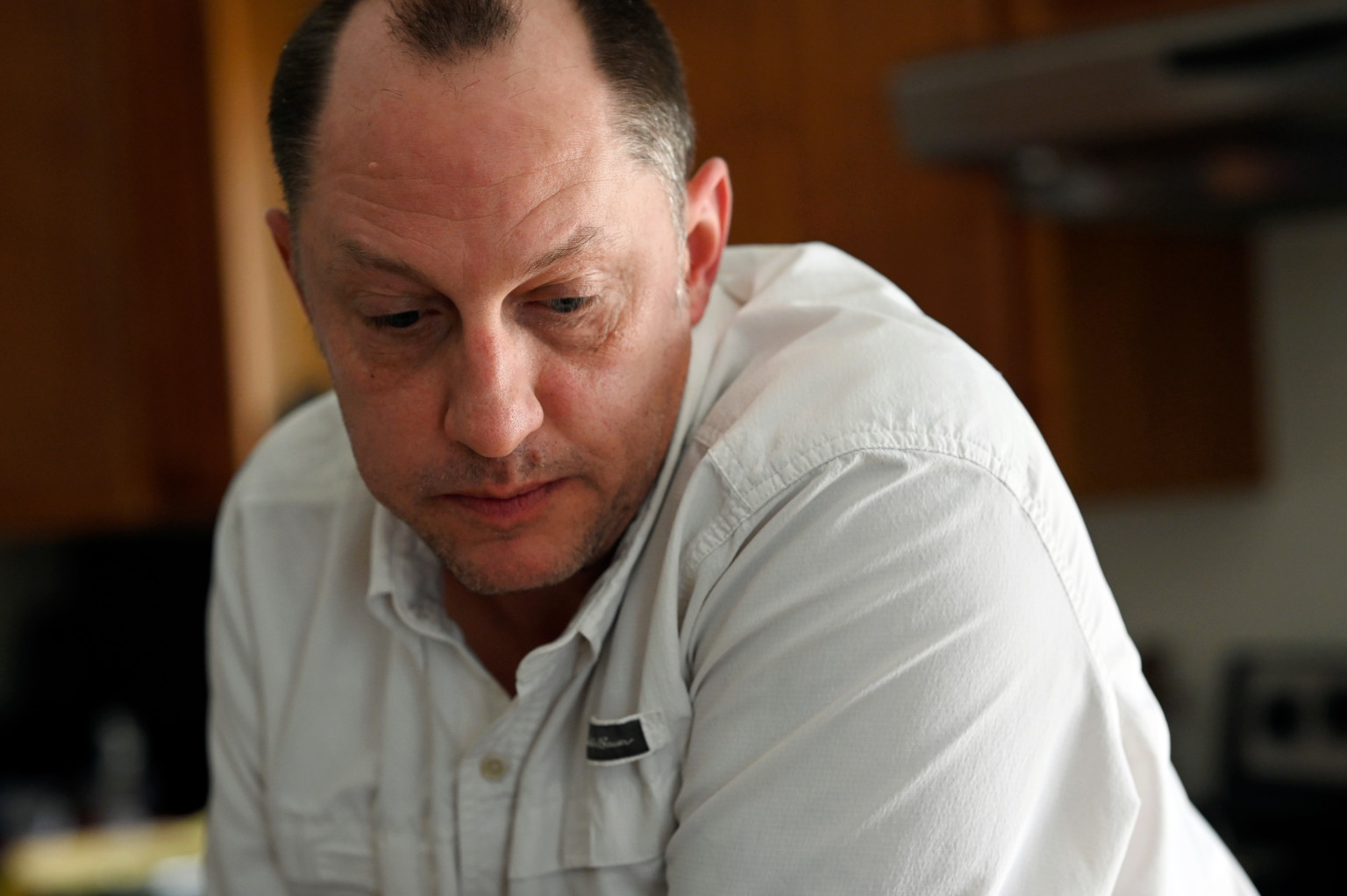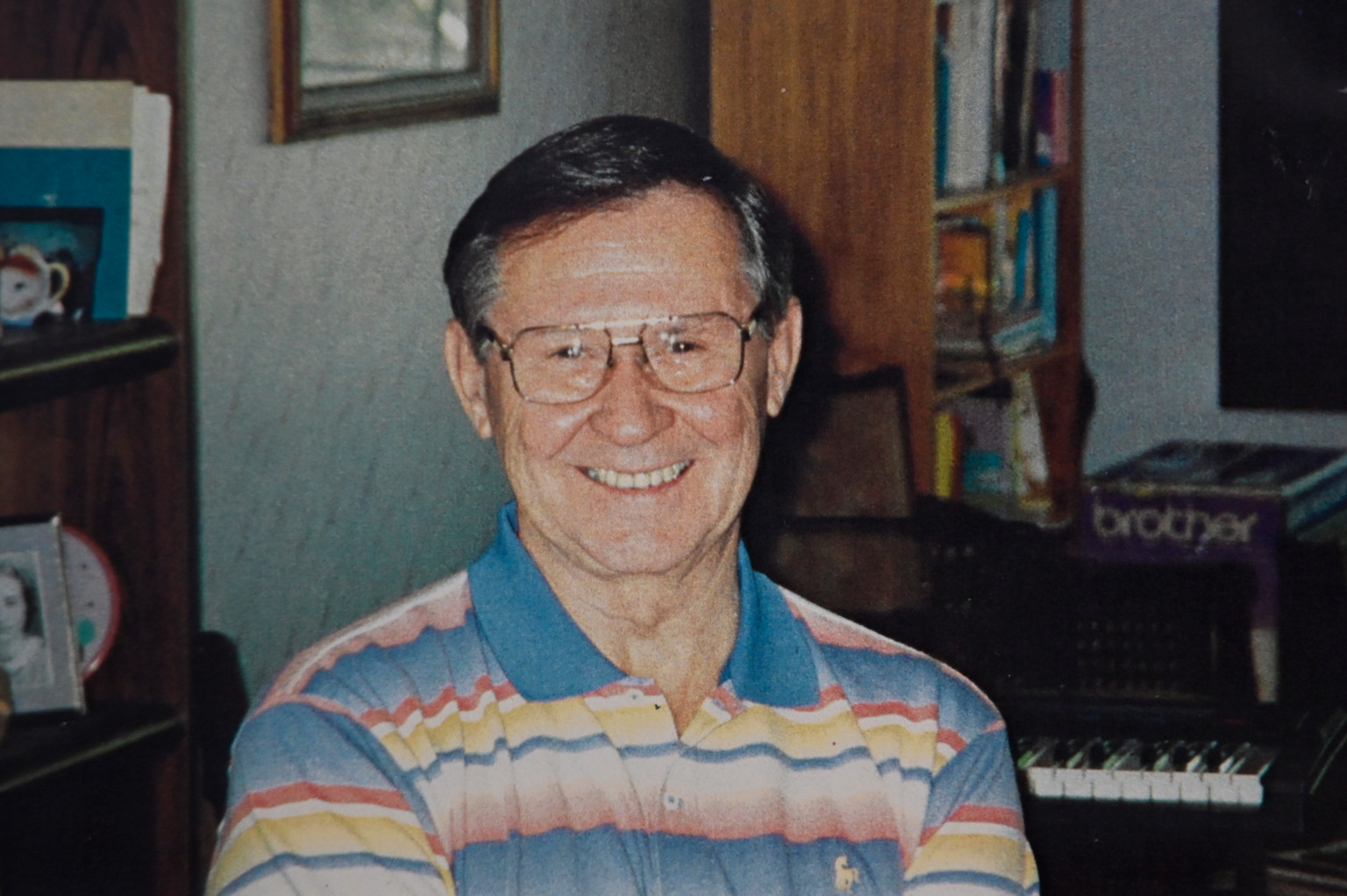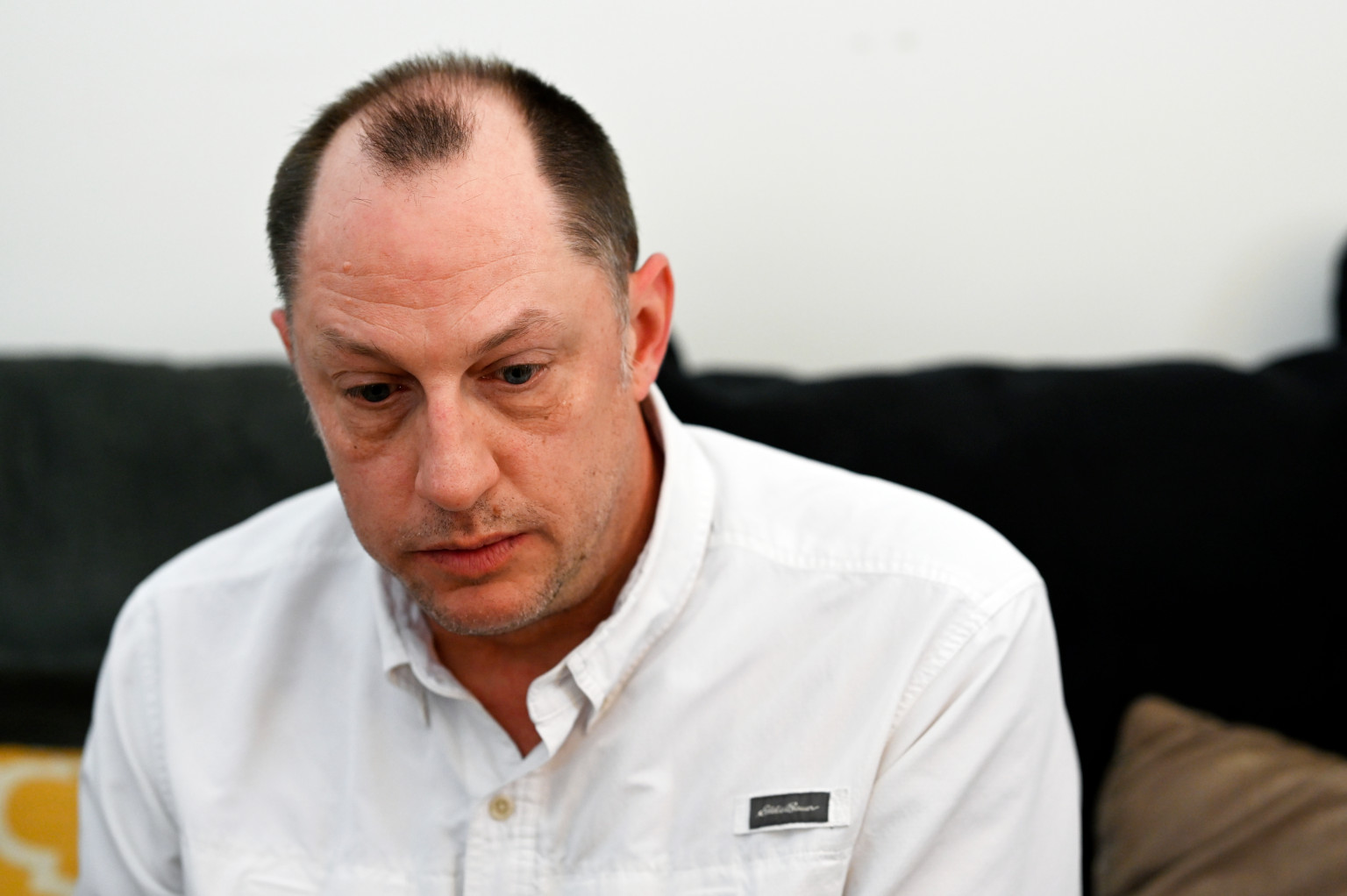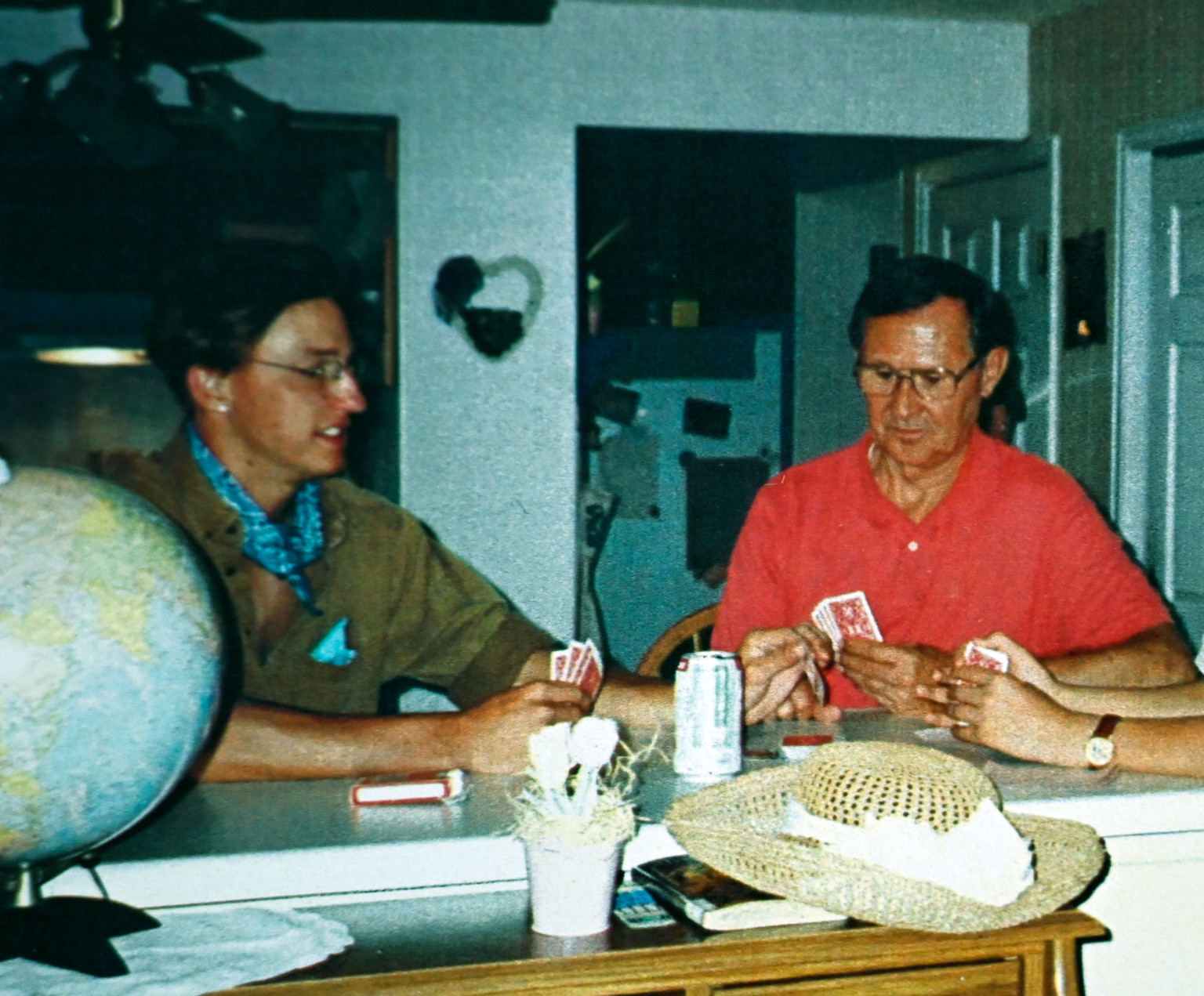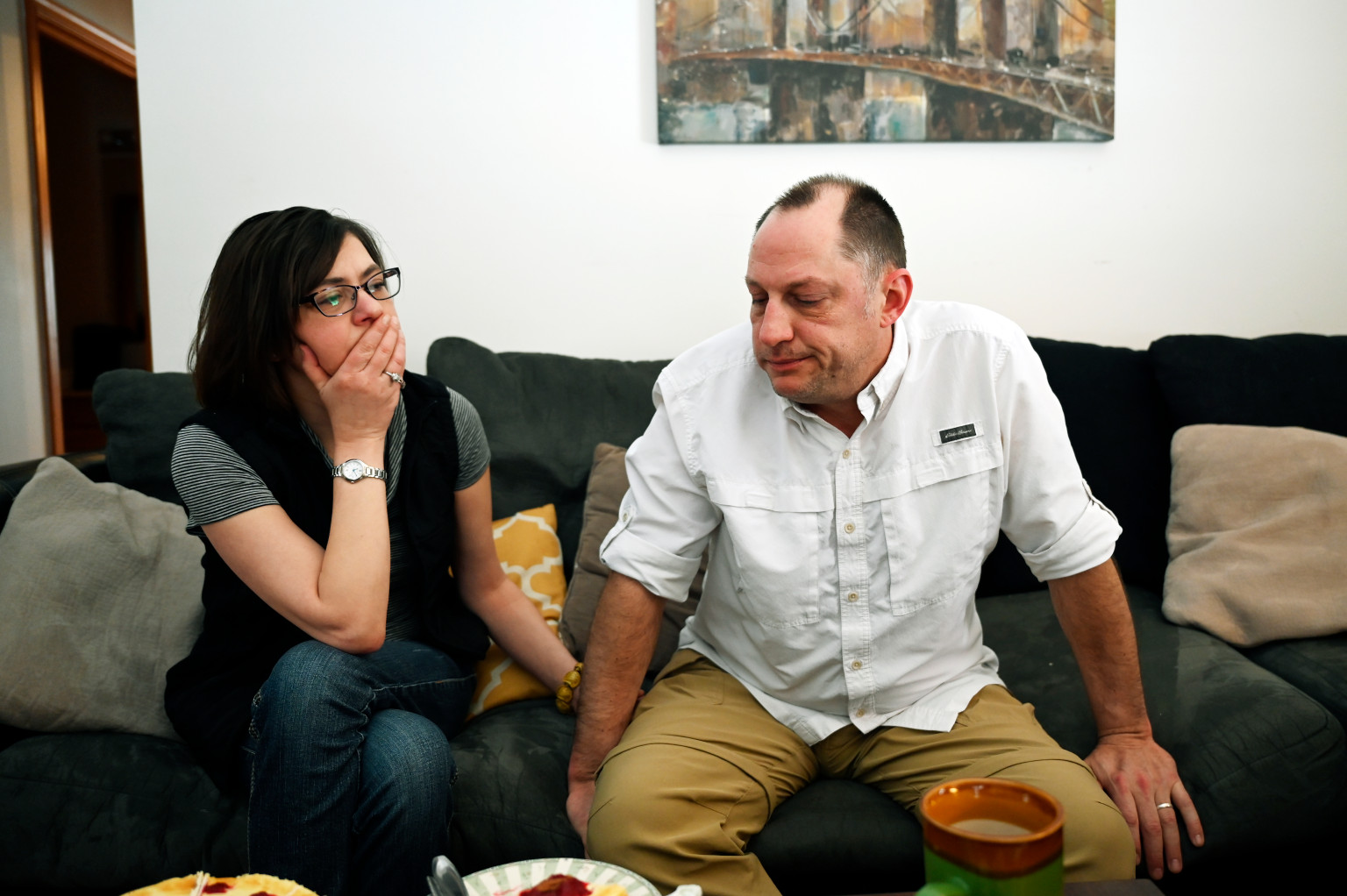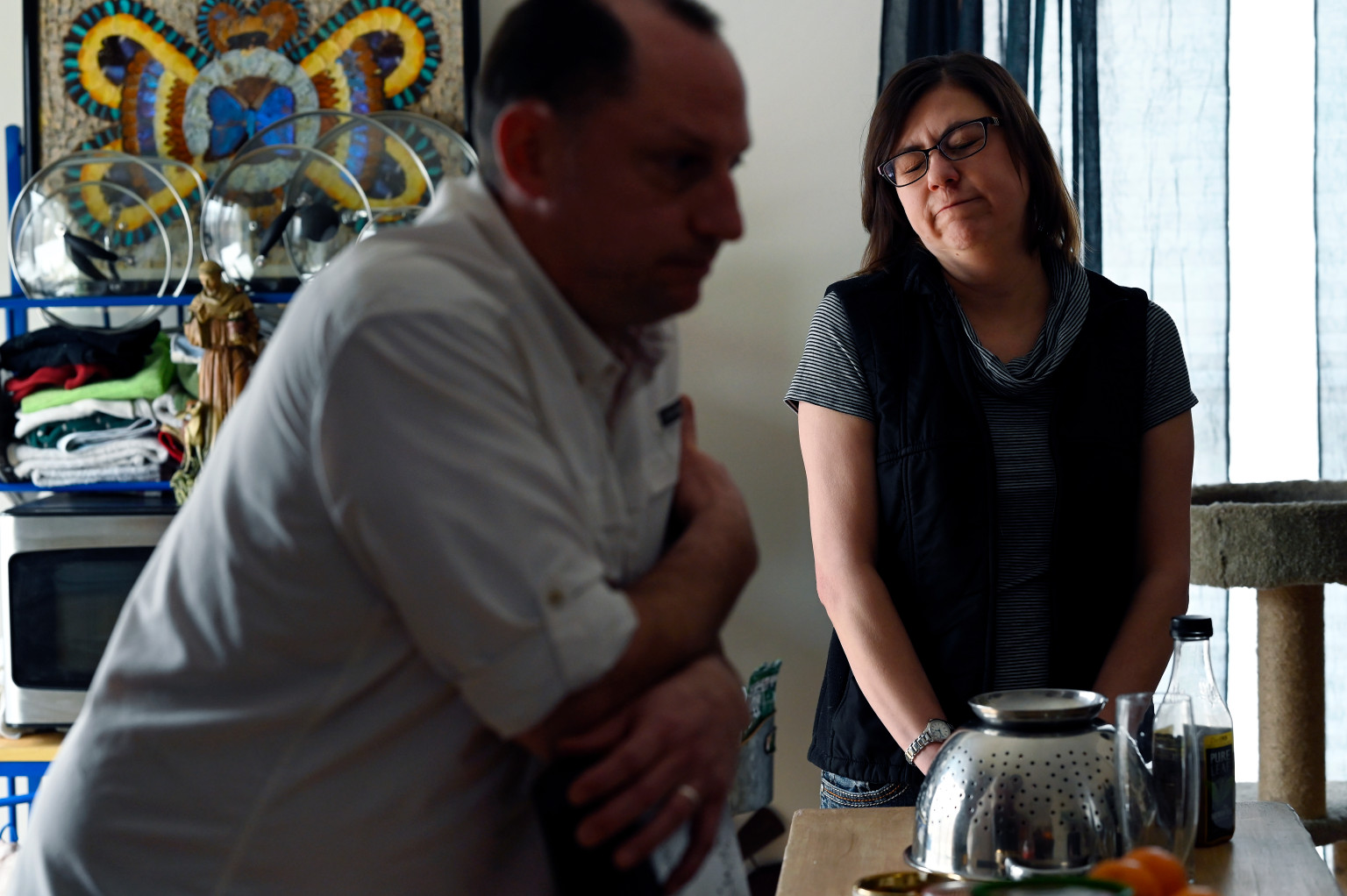A Denver Priest — His Dad’s Best Friend — Raped Him. the State’s Catholic Church Abuse Report Revealed the Secret.
By Jesse Paul
Of the 43 priests named in the attorney general’s report on child sex abuse in Colorado’s three Catholic dioceses, the allegations against St. Peter are extraordinary for not only their breadth, but also for the church’s failure to identify, address and stop his behavior. Part of that may have been because of the access St. Peter had to his personnel files. In the 1980s, St. Peter rose to high ranks in the Denver Archdiocese, serving as vicar of priests, a job that gave him access to his own records. St. Peter was named to lead the archdiocese, as administrator, after Archbishop James Casey died March 14, 1986, and remained in the post until Archbishop J. Francis Stafford was installed several months later. In 1988, St. Peter was given the title of monsignor, a Vatican-confirmed honorific reserved for priests who have provided exceptional service to the church. “It was widely rumored that St. Peter used that access to destroy incriminating documents,” the report said, citing “strong circumstantial evidence” confirming those rumors.
For instance, the attorney general’s investigation found that his personnel file contained no abuse allegations from the 1970s and 1980s, even though other priests told a superior that they remember reporting his sexually abusive behavior during that period. His file also contains no record of him being sent for psychological treatment twice in the mid-1970s. “Everyone who came into close contact with St. Peter during his tenure, particularly other clergy, knew of his ‘alcohol problems’ and ‘homosexuality problems,’” the report says. “Yet there are virtually no contemporaneous records reflecting those issues in his Denver Archdiocese file.” Other priests whose records were reviewed by investigators did contain documentation about abuse allegations and treatments. The abuse was finally investigated by the church starting in 1993, the same year St. Peter was stripped of his clerical status. St. Peter’s behavior became public more than a decade later when the Denver Archdiocese began paying out $8.2 million to settle dozens of sex abuse claims, including at least one against St. Peter. The attorney general’s report, compiled by third-party investigators using records from Colorado’s diocese, documented abusive behavior by St. Peter dating to 1963. One victim, who came forward in September, said St. Peter began grooming him when he was in sixth grade and serving as an altar boy at Denver’s St. John the Evangelist School, now Good Shepherd Catholic School. Two years later, St. Peter began sexually assaulting him, including through fondling, oral sex and anal rape. The abuse lasted four years and would typically happen after St. Peter had been drinking. The report says the boy “felt he could not report the abuse because St. Peter was beloved by his family.” He also said St. Peter sexually abused two of his brothers and another family member. Another victim identified in the report was a parish employee and high school student at Holy Family when St. Peter abused him twice in 1975. The first time, the report says, the priest fondled the teen boy’s genitals. The second time, St. Peter grabbed his neck, “squeezed and rubbed his chest, forcibly restrained him, and tried to grab his genitals.” The victim immediately told a teacher and another Holy Family priest what happened, and the allegation reached two bishops. St. Peter was briefly sent to Missouri for treatment, but his access to children and his status in the church did not appear to change. The final victim identified in the attorney general’s report was a teen parishioner at Holy Family who was abused more than a dozen times between 1978 and 1980. Investigators found documentation that St. Peter would undress and force the boy to give him back rubs in his rectory bed and at a mountain cabin. St. Peter also fondled the victim’s genitals. The last victim’s abuse wasn’t reported to the Denver Archdiocese until 1994. It’s not clear whether any of the victims who received previous settlements from the Denver Archdiocese were the same as those whose abuse was outlined in the attorney general’s report. Elms’ abuse is not described in the attorney general’s summary because he never reported it. “The Archdiocese of Denver has spent the last three decades working diligently to ensure situations like those involving Larry St. Peter never happen again,” Mark Haas, a spokesman for the diocese, said in a written statement to The Colorado Sun. “The circumstances of his alleged abuse, the failure to properly address it, and how St. Peter was allegedly able to play a role in covering it up are all horrendous and despicable.” Haas said that while the archdiocese makes “no claim to have completely solved the issue of sexual abuse of minors,” it believes it has put safeguards in place that “make the types of abuse of power committed by St. Peter nearly impossible in our current environment.”
Elms remembers being 8 years old and in the third grade. He remembers being pulled out of his class by St. Peter. He remembers being led to a small room attached to the sanctuary at Holy Family. Elms remembers an ornate box that St. Peter kept in that room. Inside the container was a chalice that was used for religious ceremonies. “I was staring at it while he was raping me,” said Elms, now 45. “That thing, I’ll never forget. It was blue. It was gold.” Elms says St. Peter anally raped him twice in the span of about a week in 1982, the same year St. Peter was named vicar of priests for the Denver Archdiocese. Both times, Elms defecated in his pants. Too afraid to tell anyone what had happened, he returned to class after having soiled himself. Classmates made fun of him, calling him “Neil poopy pants.” After the first rape, Elms says his mother was understanding when he came home with fouled clothes. The second time, she was livid as she cleaned him off, not knowing that he had been abused. “I remember my mom screaming at me, saying that I was trying to make myself sick,” Elms said. Elms says the rapes happened after what he believes were years of grooming and other sexual abuse. He’s not sure how far back the molestation goes because his memories from those early years of his life are hazy. But he is horrified by what he can remember.
St. Peter would perform oral sex on Elms, often in the boy’s bedroom. Elms said the priest “always had a hand where it shouldn’t have been.” The abuse ended after the rapes. Elms isn’t sure why. He thinks St. Peter realized he had physically hurt him and worried someone at the school was going to notice. But Elms said he thought what St. Peter did to him was just part of growing up. “For me, it was normal,” Elms said. “It was my normal. Being sexually abused by this guy was so normal to me that I was actually shocked that no one else was. I treated myself as the outcast. I was afraid of what my classmates would say — that I was a brown-noser.”
Elms’ younger brother Brian was the first one to read the attorney general’s report and make the connection. When Brian saw St. Peter’s name in the 263-page document, he immediately phoned his father, urging him to call each of his six siblings to make sure that none of them had been abused. One victim’s allegation in particular, the one whose family loved St. Peter and whose other siblings were sexually abused by the priest, was especially concerning to Brian. It reminded him of his own family. When their father reached Neil, his first call, the truth started to seep out. St. Peter was a ubiquitous figure for the Elmses. He would come over for card games and barbecues, say private Masses in the family’s house and attend holiday gatherings. “He was part of the family,” Neil said. One of their brothers was given the priest’s name as his middle name, and St. Peter, in his will, even left the Elmses a small cabin in Georgetown. The one fracture in the family’s relationship with St. Peter was the priest’s drinking. Neil can remember at least one time the Elmses showed up at St. Peter’s house and he was “obliterated.” Brian said he gave the priest a ride, at least once, when St. Peter was too drunk and slurring his words. But overall, the Elms family saw him as charismatic and caring.
“We were very close to him,” Brian said. “Lawrence would have been considered, I’d say, my dad’s best friend. We saw him a lot. He paid for some of us to go to Holy Family because we weren’t in a financial position to pay for it. He helped my family in all sorts of ways while we were financially struggling.” Brian says the revelations about Neil’s abuse forced him to take a hard look at his own interactions with St. Peter, starting with his own childhood. He teared up talking about taking his infant daughter to meet St. Peter toward the end of the priest’s life, when he was living near Washington, D.C. “Going back in my childhood has been so hard,” he said. “Just trying to figure out different pieces has been wild. I’ve been to a therapist about four times to talk through this. One of the things I had to keep thinking was: ‘Was I a victim? Did I have this happen? Did I keep this from my family and others?’” (As Brian recounted the experience, he paused at one point as his disgust boiled over. “You know what? I don’t want to call him St. Peter, because he’s not a f—ing saint. Larry.”) As far as he can recall, Brian said, he wasn’t abused by St. Peter. None of the other Elms siblings have come forward to say they were molested by him, either. But even if other members of the Elms family weren’t physically abused by St. Peter, his actions have taken a major toll on the family. Neil says he had never been close to his parents, and the abuse probably played a large part in that. He saw his father as being partly responsible. “I blamed him. I blamed him the whole time,” Neil said. “I don’t know if that blame is ever going to go away.” The Elmses’ parents have been forced to confront their Catholic faith. Neil and Brian’s mother and father gathered all of the items St. Peter gave the family and either destroyed or donated them. They shredded photos of the family with St. Peter, even cutting the priest out of a picture they took with Mother Teresa when she visited Denver. The very writing of this story and Neil’s decision to speak publicly about his molestation have further added to the tension. The Elmses’ parents declined to be interviewed for this story. “Neil has been affected by this the most, obviously,” Brian said. “The trauma that my parents are recently uncovering is sort of unfathomable. The thing you do as a parent is to protect your kids. I can’t imagine what my parents are going through.” The family asked the Denver Archdiocese to buy the cabin St. Peter gave them. Archbishop Samuel J. Aquila refused the request in a letter directing the Elmses to the voluntary reparations program the church has set up with the Colorado Attorney General’s Office to provide money to victims. “At this time, we are focusing our energy and resources on that independent program and must let that independent process be completed,” Aquila wrote in a letter, the authenticity of which was confirmed by the church. Aquila added in the letter that he hoped the Elms family would continue to financially support Catholic causes. Neil Elms has submitted a claim for reparations, but he doubts he will be paid. The process requires victims to provide documentation of their abuse — including medical records, psychiatric and psychological counseling records, and correspondence about their mistreatment — and to notify prosecutors in the Colorado county where the abuse happened. Elms says that since he never told anyone about St. Peter’s actions, he has no documentation. “I’m one of the victims who kept their mouth shut,” he said. Camille Biros, one of the co-administrators of the reparations program, said the questions are designed to help determine eligibility and root out false claims. “We ask for a variety of different support because, as you can well imagine, there are people who may think they can game the system and submit something completely fraudulent,” she said. “We’ve been doing this for a long time, and there are bad actors out there. We need to be careful.” Still, Biros said, factors such as prior abuse complaints against a priest, the types of alleged abuse and the clergy member’s assignment record compared with when the abuse is alleged to have occurred also are used to determine whether a claim is eligible and credible. Outside of the reparations process, Elms doesn’t have many options to seek compensation from the church. Under Colorado law, child sexual assault victims have just six years after they turn 18 to sue their alleged victims in civil court. Victims who want compensation from organizations that acted negligently in allowing the abuse to continue or by shielding the perpetrator have only two years after they turn 18 to sue. In many cases, including Elms’, it can take decades before someone breaks their silence about childhood abuse. Colorado lawmakers this year are attempting to eliminate the civil statute of limitations for child sex assault cases, but it doesn’t appear they will be able to give people abused in the past the opportuntity to take legal action retroactively. When the investigation into priest abuse in Colorado’s dioceses was released in October, Neil Elms was livid about the way it was handled. He felt the Colorado Attorney General’s Office should have done more to ensure that potential victims knew the report was coming out. He was angry that his 37-year-old secret was unfurled and he had no advance warning or control. “I had no idea the (attorney general) was investigating,” Elms wrote in his first email to The Colorado Sun. “I had no idea a report was being written. I had no idea the report was published.” The AG office says the special master overseeing the investigation worked hard to make sure that people knew its report, released on Oct. 23, was coming and to respect victims’ privacy. There were some priests, for instance, whose names were left out of the report because they worked in such small communities on the Eastern Plains that officials feared victims would be easily identified. Elms’ frustration has shifted since then. He’s still upset with how his secret came to light, but he’s glad that he’s now finally able to start addressing the abuse and getting help from his wife, Katharyn, a trauma therapist. “It explains a lot. A lot,” she said. “Now we both can understand and handle it together. Ever since this whole thing started, it’s been a roller coaster.”
Katharyn was the first person Elms told after being called by his father. (“How the f— am I going to explain this to my wife?” he remembers thinking. “How do you tell your wife you’re not gay?”) Later that day, Elms told his father what St. Peter had done to him. “I think that was the hardest part for me,” Elms said. “I think he realized he knew even before I told him. We were both bawling our eyes out.” Since then, their relationship — which had been rocky since Elms was a teen — has improved dramatically. They speak on the phone frequently. “I’ve never had so many conversations with my dad in my life,” Elms said. “We touch base every day now just to see how each other is doing, to see how each other are feeling. The only good thing about this report coming out so far has been my reconnection with my dad.” If Elms had told someone earlier, he said, he might have been able to avoid struggles with his sexuality, a broken relationship with his parents, difficulties in his marriage and emotions that have boiled over for reasons he could never explain. “If I would have just spent the time to tell somebody that I confided in, I might not be here today,” he said recently. “When I look back, the reason I didn’t say anything is because I didn’t want to hurt my family.”
In some ways, though, Elms is also OK with the timing. Had it come out during his teen years — an era when it wasn’t acceptable to talk about things such as sexual assault and molestation — he thinks he might have ended up dying by suicide. Elms has avoided church, for the most part, since his childhood. When his family would go to services on Sundays, Elms says he would go fishing instead, showing up just in time to grab a program to try to convince his parents that he had actually gone to church. “I haven’t set foot in a Catholic church,” he said, “since I was, I don’t know, 13 years old?” — the exceptions being St. Peter’s funeral and his sisters’ weddings. “There was a point where I would do literally anything I could to not walk into a church.” In his home, there are still some tributes to his Christianity on display — a small statue of Jesus, a Bible — but Elms says there is a big difference between his faith and Catholicism. He believes in God, but his belief in the institution that permanently scarred him evaporated long ago. He calls himself a deist, “certainly not Catholic.” Elms spent so much time trying to distance himself from the abuse and everything that reminded him of it, so why not just keep lying when his father called, the way he had for more than three decades? “It’s really hard to do that,” he said. “I’m not a teenager anymore. Maybe it’s because he caught me in a vulnerable place in the middle of the river.” Elms said his dad’s question simply shocked him. No one had ever asked about the abuse, in part because they didn’t have a reason to. The Elmses knew that St. Peter had a drinking problem and liked young men, but they never thought he was a serial child molester — let alone someone who would hurt a member of the family. “He asked me a question I never thought I would ever hear,” Elms said. “I could only imagine how painful it was to ask his own son.” St. Peter was placed on medical disability in 1993 and moved to Virginia, more than three decades after he was first ordained. A Denver Post article from that year says he resigned from Church of the Risen Christ, in south Denver, because of an alcohol problem and mental illness. In a letter to the congregation, St. Peter said he had “uncovered a deep underlying clinical depression which I have not been able to conquer. … My doctors have indicated that I should not return and resume the responsibilities of such a large parish. I wish I could bid you farewell in person, but I trust you will understand that I’m just not up to such a farewell.” But the attorney general’s report says St. Peter actually left because the Denver Archdiocese told him he could resign, retire on medical disability and leave town; or participate in an investigation into his sexual misconduct. St. Peter chose to leave. The Denver Archdiocese never notified parishioners about any of St. Peter’s sexual abuse history, investigators found. St. Peter returned to Denver shortly before he died from kidney failure in 2003. He was 74. Friends found St. Peter’s body in his townhome. A Rocky Mountain News article described him as a “take-charge priest.” Elms said St. Peter’s death — “Aug. 18, 2003, I’ll never forget that day” — was the best day of his life. But any solace it may have given him was not permanent. “He’s ruining people’s lives even after he’s dead,” Elms said, “and that sucks that he still has that much f—ing control.” Looking back, Elms wonders whether St. Peter had a “flock” of children he abused. “I can’t imagine how many other relationships St. Peter had with other families,” he said. “It’s disgusting to think about how many of my classmates could be impacted by this — and their families.” Elms said that’s part of the reason he wanted to tell his story — to prevent others from being caged by the horrors of their sexual abuse. Letting people know what happened to him might encourage others to speak about their experiences. Standing near the spot in the Housatonic River where he was wading when his father called in October and his journey dealing with his abuse began, he talked more about his past. The water was low and the banks were covered with snow. He stared out on the icy water, his eyes childlike and somber. He looked like he was 8 years old. “I’ve got a long ways to go,” Elms said. “This is just the beginning.”
|
.
Any original material on these pages is copyright © BishopAccountability.org 2004. Reproduce freely with attribution.
